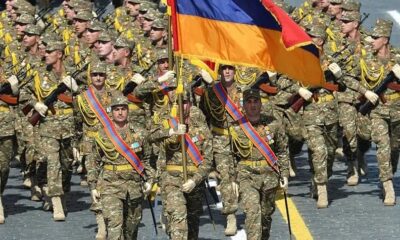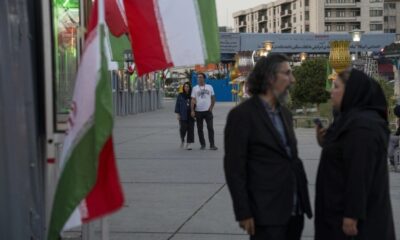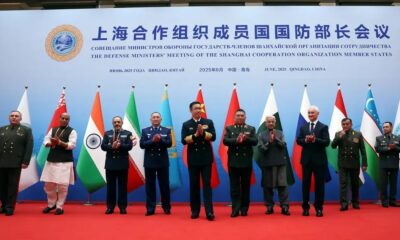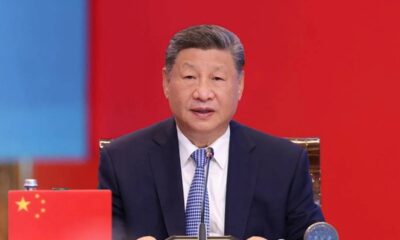Russia
The Kursk battles and the crisis of Russian military strategy
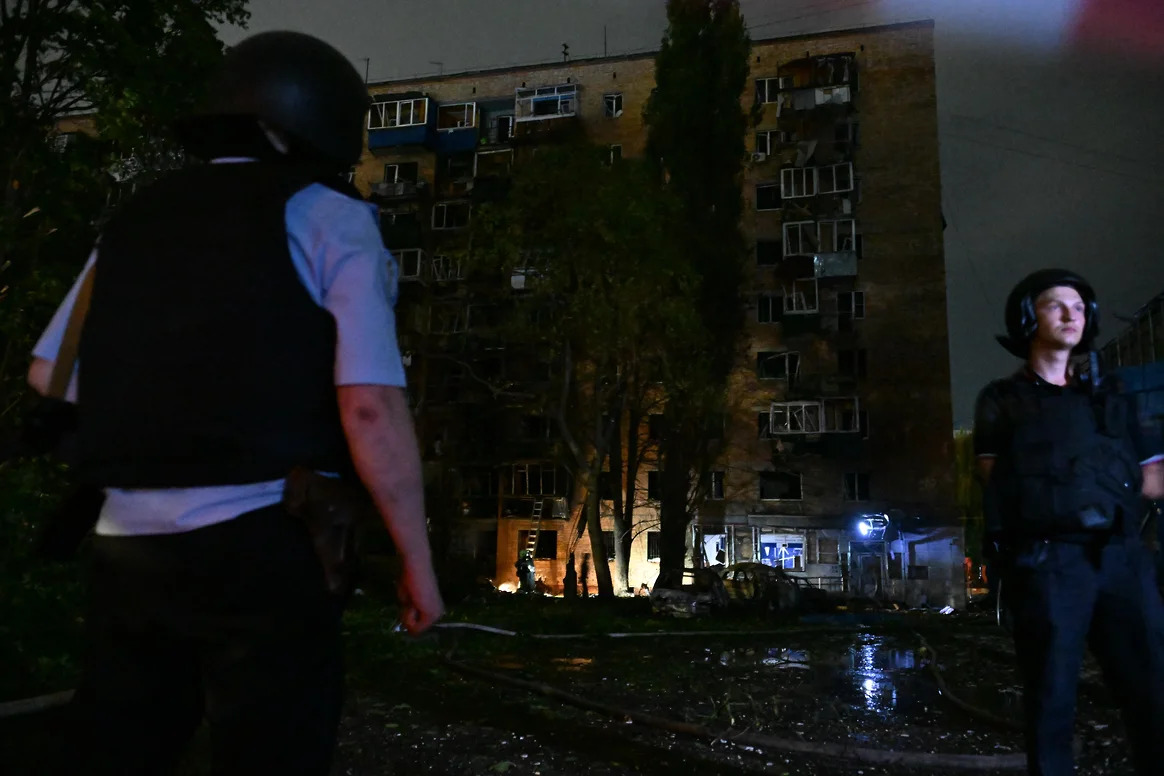
While everyone was waiting for Iran to attack Israel, Ukraine opened a new front in the Kursk Oblast bordering Russia. On the morning of 6 August, the Ukrainian army advanced to a depth of 10 to 15 kilometres in the Kursk region, capturing some settlements and carrying out intensive shelling of civilian targets.
At the same time, there were rumours that the Ukrainian army was planning to seize the Kursk nuclear power plant and the Sudja gas station.
At the beginning of the offensive, at 8am, according to the Russian Defence Ministry, about 300 Ukrainian troops, 11 tanks and more than 20 armoured vehicles moved to the border of the Kursk region. The Russian army and border guards (Rosgvardia) initially managed to repel the attack, destroying some tanks and armoured vehicles.
However, the fighting continued and intensified throughout the day, with air defence systems deployed near the border hampering the Russian air force, which went on the offensive, resulting in the capture of three Russian villages by Ukrainian troops.
Immediately after the attack, Russian President Vladimir Putin convened a meeting of the Security Council at 13:00. As at every sensitive moment, the Russian authorities used the rhetoric of an act of terrorism, aimed at minimising the psychological impact on the population, but which for a long time bordered on denial.
Foreign Ministry spokeswoman Maria Zakharova was no exception, setting out the official position: “We are talking about a new act of terrorism. It is clearly directed against the civilian population.
When you have hundreds of soldiers, armoured vehicles and tanks, air defence systems and thousands of foreign mercenaries on standby, it is not just an act of “terror”, it is an act of war. More specifically, it is the opening of a new front in this war. Perhaps it will fail, but for now they are holding the villages of Kursk.
The fact that Kyiv is targeting an energy and trade route is another matter.
Until now, natural gas from Russia has been transported to the European Union via two gas metering stations: Sokhranovka and Sudzha. In 2022, Naftogaz, Ukraine’s state-owned gas company, refused to supply gas to Europe via Sokhranovka because it is located in the Lugansk People’s Republic. The only remaining route is Sudzha, which is currently under attack. So the aim seems to be to take control of the Sudja station and then destroy it.
It is possible to see another purpose in the current configuration: Kharkiv against Kursk. Kyiv wants to force Moscow to withdraw its troops from Kharkiv in order to regain the territory it has lost in the Kursk Oblast. Although Russia retains the initiative on the front line, it would be the loser in such a situation.
Current situation on the ground
Kommersant quoted Health Minister Mikhail Murashko as saying that 69 victims of the 11 August shelling in Kursk oblast had been hospitalised, 17 of them in serious condition. Of the 29 outpatients, 8 have been discharged.
A rocket attack on Kursk early on Sunday destroyed a nine-storey building and injured 13 people, two of them seriously.
According to local officials, the situation in the border regions remains tense following the attack by Ukrainian sabotage and reconnaissance troops. However, there are currently no active clashes in the Belyovsky and Oboyansky regions.

Source: Kommersant
The Russian Defence Ministry reported that 14 drones and four Tochka-U tactical missiles were intercepted over Kursk on the night of 11 August.
Meanwhile, Alexei Lihachev, head of the federal nuclear corporation Rosatom, discussed the threat to the Kursk nuclear power plant with International Atomic Energy Agency (IAEA) President Rafael Grossi, stressing the global risks posed by the situation.
Evacuations continue in the region, with more than 76,000 people displaced and more than 4,400 in temporary shelters.
Official discourse and loss of trust
From the beginning, the Russian Ministry of Defence kept the information it released to a minimum. First it said that an attack had been launched by 300 troops, then that it was a thousand and that they had been repulsed. But on the evening of the second day, as Ukrainian troops continued to advance, the evening news showed unrealistic scenes with officials making statements that were far from reality. In fact, at least five brigades of between 7,000 and 17,000 troops had entered Russian territory.
But Kursk residents who witnessed the situation with their own eyes, and war correspondents such as Mikhail Zvinchuk and Yuriy Podoliak of the Rykbar Telegram channel, disagreed:
“It is true that [Chief of General Staff Valery] Gerasimov is doing very well, so much so that we would like to ask him on what objective factors is this optimism based? The need to please the boss? The need to lull the pure of heart to sleep? Or is it denial based on an inability to face reality and the consequences of the situation?
The mainstream media played the same game, with Izvestiya going so far as to publish a story claiming that the Ukrainian army had been driven out of Sudzha. While they do not hold the whole town, there is a pocket of resistance just to the east, where Russian troops are clashing. Podoliak said:
“I would like to draw the attention of our television crews to the fact that there is no need to deceive people and make Izvestiya’s report of the 6th of the month look like it was filmed on the 7th. Why is this important? Yes, it misleads Muscovites and the whole country, but it also does not allow people on the ground to get their bearings and make the right decisions, including the decision to evacuate. And then people die because of these lies.
In times of war, when you don’t have all the facts in your favour, it’s particularly dangerous to create a completely virtual world; the ruling elite can lose the trust of a population that doesn’t understand what’s really going on, but knows very well that something dangerous is going on.
Functional problems in the army far from solved
The new defence minister, Andrei Belousov, is highly respected, but he is not a soldier, and cases of corruption are on the rise. So much so that they sometimes raise the question of internal reckoning, as in the case of General Ivan Popov, who stopped the Ukrainian army’s advance in Zoporoye in 2023 and is now under house arrest. Some ask why Popov is not in Kursk at the moment. These questions show how difficult it will be for the Ministry of Defence and the General Staff to reform themselves through corruption cases alone. And there are many other questions. At least for an army at war: who is responsible for military strategy? And who is responsible for the Kursk Oblast?
Obviously, the process of legionisation of the army in wartime is reaching its limits. We are faced with paid contract soldiers, career officers with a different pay scale, and mobilised soldiers with a different status, and they are all fighting. Moreover, the conscripts remain outside the war zones… And this is an ideological problem.
And all this creates time bombs in society. Perhaps, in order to win the war, it is necessary to put an end to the logic of “special operation”.
Moscow, which has still not changed its position, is calling on the proverbial “international community” to condemn the “terror” in Kursk unequivocally, and to do so at the UN. At the same meeting where the ambush of the Wagnerians in Mali was discussed, a few words were said about Kursk, as if they were events of the same nature.
Moreover, the Russian press assures us that the IAEA is aware of the situation at the Kursk plant. A state of emergency has been declared in the Kursk Oblast, where the population is under attack, its territory occupied and facing a pogrom. Just as in the case of major fires or floods. In this context, however, a state of war should not have been declared in the region, which did not happen.
In other words, Moscow is still within the framework of “special military operation”. On the other hand, Russia is losing time and power in a war that it still does not officially recognise as a war. If it adopts an international discourse centred on negotiations, it will get in return the bombing of Sevastopol and the attacks on Kursk.
Meanwhile, the discourse of the creation of a Kursk People’s Republic “waiting to be liberated” and annexed to Ukraine is on the rise. This does not mean that this fantasy will be realised, but the intention is clear.Russia must take back the territories it currently occupies, otherwise it will be forced to negotiate its surrender, which will inevitably drag the current ruling elite into the depths of history.
Unlike Kharkiv in 2022, there can be no “strategic retreat” because the border has been crossed. In the event of a retreat, it will be impossible not to raise the question of treason, and the Putin umbrella will hardly protect these “great strategists” from popular vengeance. The ruling elite seems to be taking precautions, and there are two reactions.
Dmitry Medvedev wrote the following:
“From now on, special military operations must have a clear extraterritorial character. It is no longer just an operation to regain our official territory and punish the Nazis. We can and must go into the territory of Ukraine that still exists. To Odessa, Kharkiv, Dnipropetrovsk, Mykolayiv, Kyiv and beyond. There should be no restrictions in terms of the recognised borders of the Ukrainian Empire. Now we can and must talk about this openly, without shame or diplomatic fawning.”
Medvedev is right, but to do so it is necessary to review the situation and envisage victory. This requires a change in the ideological framework and political courage. So far there is no sign of either.
Russia
China’s energy pivot: Power of Siberia 2 gains traction after Iran-Israel conflict
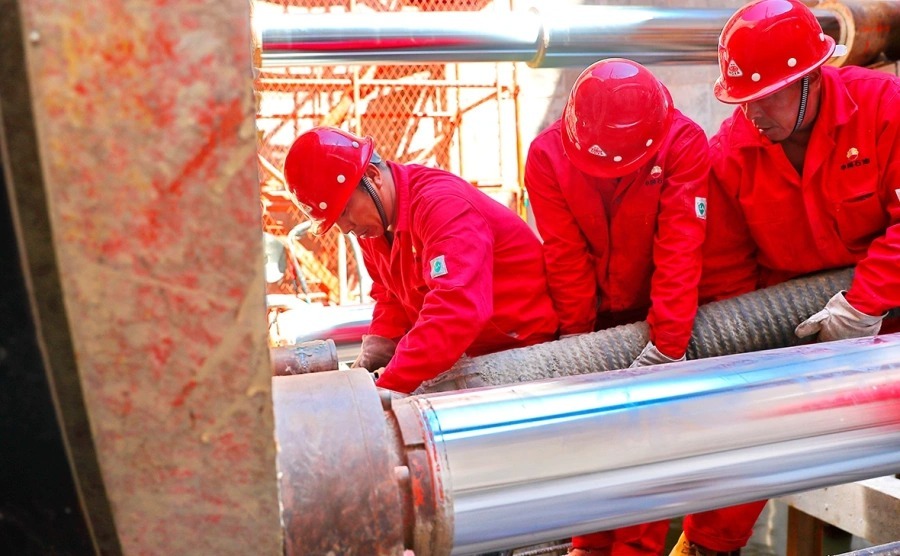
According to a report by The Wall Street Journal (WSJ), citing sources close to decision-making processes within the Chinese government, the recent conflict between Iran and Israel has heightened Beijing’s interest in Russia’s Power of Siberia 2 natural gas pipeline project.
The report indicated that Beijing, increasingly concerned about the reliability of oil and natural gas supplies from the Middle East, is exploring alternative energy sources.
Approximately one-third of China’s imported natural gas is supplied as liquefied natural gas (LNG) from the United Arab Emirates (UAE) and Qatar. These shipments traverse the Strait of Hormuz, a critical waterway that Iran has previously threatened to close. Furthermore, private Chinese refineries have reportedly become increasingly reliant on inexpensive Iranian oil in recent years.
According to analyst data, 90% of Iran’s oil exports are directed to China, despite US sanctions. Following the announcement of a ceasefire between Iran and Israel, US President Donald Trump stated, “Now China can continue to buy oil from Iran. I hope they buy a lot from the US as well.”
Price: The biggest hurdle in negotiations
Mid-month, Russian Deputy Prime Minister Alexander Novak affirmed the ongoing relevance and importance of the Power of Siberia 2 project within the framework of energy cooperation with China, in a statement to Vedomosti daily.
Design work for the Power of Siberia 2 pipeline commenced in 2020. The pipeline is planned to have a total length of approximately 6,700 kilometers, with 2,700 kilometers of this route passing through Russian territory.
However, Financial Times reported that the gas price proposed by China for future contracts has not satisfied the Russian side. According to the report, Beijing aims to purchase gas at a price nearly equivalent to Russia’s domestic market cost.
In response to these claims, the Chinese Foreign Ministry announced that Beijing is prepared to deepen mutually beneficial cooperation with Russia.
Russia
It is too early to assess the Iran-Israel ceasefire’s durability, says Lavrov
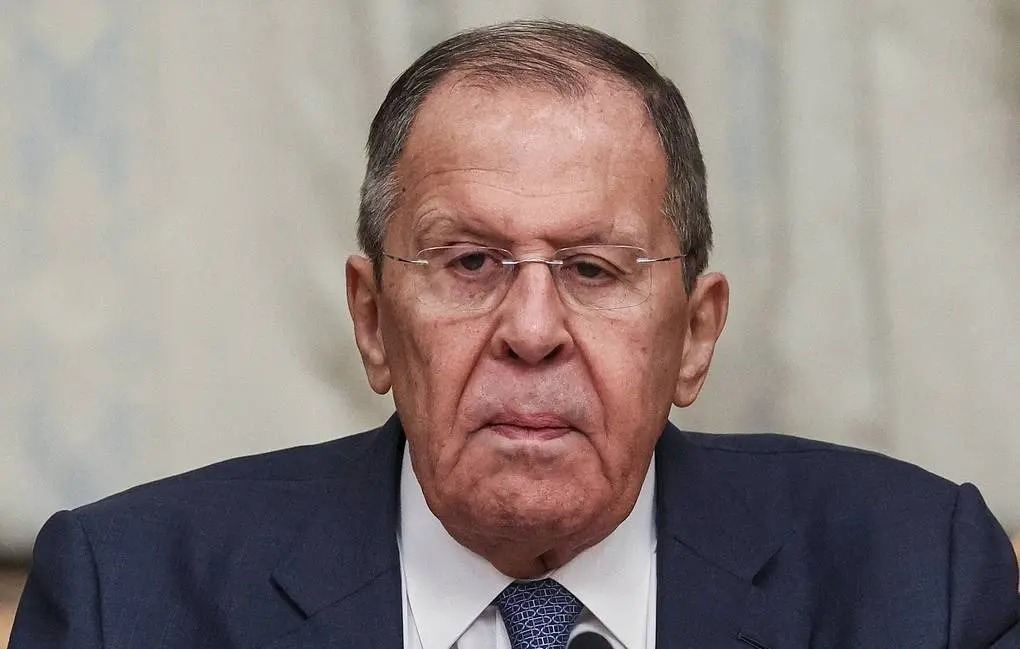
Russian Foreign Minister Sergey Lavrov, speaking at the Primakov Readings international forum, stated that the shifting approaches of Western leaders regarding Ukraine reflect the failure of their initial plans.
Lavrov noted that Moscow will wait for proposals from the West to mend relations, while emphasizing that it is still too early to make definitive comments on the permanence of the ceasefire between Iran and Israel.
The West’s slogans have evolved from ‘strategic defeat’ to unconditional ceasefire
Lavrov recalled that at the beginning of the military conflict, the West was “hysterically shouting” about the need to inflict a “strategic defeat on Russia on the battlefield.”
He noted that this slogan eventually changed to phrases like “Russia must not win in Ukraine,” and summarized the current situation as follows:
“Now, they are demanding, requesting, and even begging for an immediate, unconditional ceasefire. This is the very thing that Volodymyr Zelenskyy categorically rejected a few years ago when he was living and working under the banner of a strategic defeat on the battlefield.”
The minister observed that the fiasco of the West’s strategy and tactics is evident, but “Europe is still trying.”
Europe seeks negotiations
In May, French Foreign Minister Jean-Noël Barrot announced that European countries wish to be represented in potential Russia-Ukraine negotiations in Istanbul, following a proposed 30-day ceasefire by Kyiv and its allies.
Barrot stated that if Moscow refuses to cease fire, they expect the US and the European Union to increase pressure on Russia and impose extensive sanctions.
In contrast, US President Donald Trump has repeatedly avoided new anti-Russian sanctions, explaining that he did not want to jeopardize peace talks he believed were close to an agreement.
On June 20, following comments from Senator Lindsey Graham during his visit to Ukraine about his intention to advance a bill imposing a 500% secondary tariff on Russian energy sources, Trump warned that such statements should be chosen more carefully.
Kremlin Spokesman Dmitry Peskov stated on June 10 that there was no common ground for future agreements with Europe. Peskov attributed this to Europe being “focused on war for now” and showing no signs of seeking common ground with Russia.
‘Let them come with proposals when they realize their mistakes’
Lavrov also expressed that Russia expects proposals from Western countries to rebuild relations once the current “international arrogance” subsides.
Arguing that many countries have severed ties with Russia to the detriment of their own people, suffering enormous financial and reputational losses, Lavrov stated, “Let them come to us when they realize their mistakes and present their proposals, and we will decide based on our own interests.”
‘Too early to speak on the Iran-Israel ceasefire’
Addressing developments in the Middle East, Lavrov said it would be premature at this stage to draw final conclusions about the stability of the ceasefire reached between Iran and Israel.
Citing reports that the US persuaded Israel to agree to the ceasefire, with Qatar playing a similar role in negotiations with Tehran, Lavrov highlighted that news of rocket attacks from both sides continued to emerge after the ceasefire was declared.
“It is very difficult to form a complete picture of what is happening right now; the information is fragmented. We should not make hasty assessments,” Lavrov remarked.
The minister affirmed that Moscow supports any steps aimed at de-escalation and hopes for a long-term ceasefire, adding, “But we are for peace.”
On June 24, at 08:08 Turkish time, US President Donald Trump announced that the ceasefire between Iran and Israel had come into effect.
Before this announcement, Trump had stated that the parties had reached a “full agreement for a full ceasefire.” Iranian media also confirmed the ceasefire had taken effect.
However, at 10:58 Israel time, Defense Minister Israel Katz announced that Iran had violated the ceasefire agreement by launching two ballistic missiles.
Katz declared that he had instructed the Israeli army to “respond decisively to Iran’s ceasefire violation with intense strikes on regime targets in the heart of Tehran.”
Russia
Putin calls attacks on Iran unprovoked and unjustified aggression

Russian President Vladimir Putin, during a meeting with Iranian Foreign Minister Abbas Araghchi, described the attacks on Iran as “unprovoked aggression with no justification or basis.” In response, Araghchi thanked Russia for its condemnation, stating that the United States and Israel are responsible for the escalating tensions in the Middle East.
According to a statement from the Kremlin, Putin emphasized that Moscow is making efforts to assist the Iranian people. “We have long-standing, good, and reliable relations with Iran,” Putin remarked during the meeting.
Iranian Foreign Minister Araghchi expressed his gratitude to Russia “for its resolute condemnation of the actions of Israel and the US.” Stating that Russia is “on the right side,” Araghchi attributed the escalation of tensions in the Middle East to the actions of the US and Israel against Iran’s nuclear facilities. He noted that the Tehran administration considers the actions of the US and Israel on Iranian territory to be illegitimate, and therefore, Iran has the right to defend itself.
Araghchi also highlighted that Russia has always been a partner for Iran in the field of peaceful nuclear energy. He added that Moscow has played a positive role in negotiations regarding Tehran’s nuclear program.
During the meeting, Putin conveyed his best wishes to Iranian President Masoud Pezeshkian and Supreme Leader Ayatollah Ali Khamenei. Araghchi reciprocated with similar wishes on behalf of the Iranian leadership.
The Iran-Israel conflict escalated on June 13 when Israel launched an attack on Iran’s nuclear facilities, prompting Tehran to initiate retaliatory strikes. On June 22, the US struck Iran’s nuclear facilities in Fordow, Natanz, and Isfahan. President Trump warned that new attacks would follow if Tehran did not surrender.
Following the attacks, Russia, China, and Pakistan submitted a draft resolution to the United Nations Security Council condemning the aggression against Iran.
On June 20, Iranian Foreign Minister Araghchi met in Geneva with French Foreign Minister Jean-Noël Barrot, German Foreign Minister Johann Wadephul, and British Foreign Secretary David Lammy. Although the parties agreed to continue dialogue after the meeting, media reports indicated that no concrete results emerged from the discussions.
-
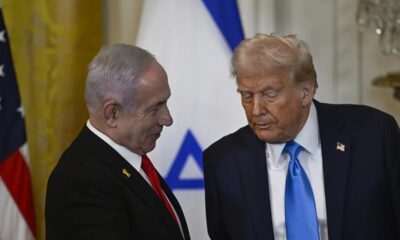
 Middle East1 week ago
Middle East1 week agoUS to launch major bombing campaign against Iran this weekend, Hersh reports
-

 Diplomacy2 weeks ago
Diplomacy2 weeks agoFormer diplomat warns forcing Iran out of the NPT is the greatest danger
-

 Middle East2 weeks ago
Middle East2 weeks agoIran targets Mossad and Unit 8200 in missile attack on Tel Aviv
-

 Diplomacy2 weeks ago
Diplomacy2 weeks agoFormer CIA analyst says Israel used ceasefire talks as a trap
-

 Middle East2 weeks ago
Middle East2 weeks agoIranian missile attack causes heavy damage across Israel
-
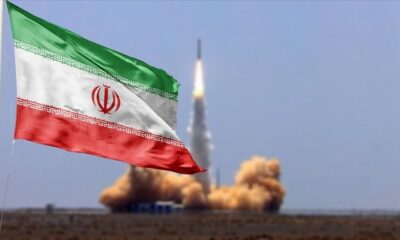
 Middle East2 weeks ago
Middle East2 weeks agoIran signals NPT withdrawal amid rising tensions with Israel
-
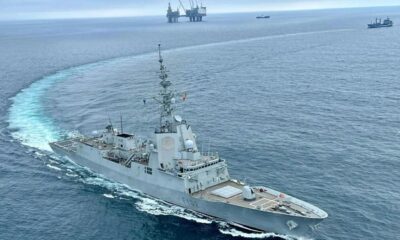
 Russia2 weeks ago
Russia2 weeks agoRussia alleges UK-Ukraine plot for false flag attack on US Navy in Baltic Sea
-
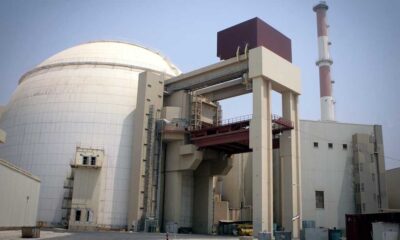
 Asia1 week ago
Asia1 week agoIran’s uranium enrichment program since 1979


